

The war in Ukraine, sparked by Russia’s invasion a year ago, is the biggest European armed conflict since WWII. The outcome is still uncertain, but the lessons from the fighting will shape military thinking and defense strategies worldwide. The Insider highlights the most crucial findings from the first year of the war.
Content
Tanks still matter
Artillery is still the “god of war”
Drones trump jets
Drone War One
Hierarchy works poorly
Logistics and supply chains top the list
Quantity is no longer quality
Battlefield entrepreneurs
Monitors instead of assault rifles
Nukes are not an advantage
No cyber attacks
War machine powered by microchips
Fighting everywhere
Defense before attack
Warfare intensity controlled from outside
Missiles are not enough for success
You can't beat nature
Urban warfare
Tanks still matter
The war began with massive losses of tanks and armored vehicles for Russia. Videos captured tank columns being struck by anti-tank missiles and drones. Half of Russia’s T-72 tanks, its most prevalent type, were destroyed based on the latest estimates. Some experts argued that tanks, which they said had been somewhat of a 20th-century platform, were outmoded and susceptible to modern anti-tank weapons.

Tanks are not obsolete or easy targets. Russia used them wrong at the start of the war, without infantry, air cover, or supplies. Many tanks were left behind because they had no fuel, ammo, spare parts, or technical support. The war showed that tanks needed backup and logistics.
If tanks are useless, why does Kyiv want allies to send them? The reason is clear: without big mechanized units, freeing lost lands is impossible. Just like a Russian attack with strategic goals without tank units is hard to imagine.
David Gendelman, independent military expert (Israel):
The ongoing conflict between Russia and Ukraine proves that tanks are still vital in modern warfare. Tanks offer a combination of protection, mobility and firepower that no other weapon can match. Both sides rely heavily on tanks in this war, and that’s why the Ukrainians ask for more tanks from their allies, even old ones, while the Russians try to increase their production of new tanks and repair old ones from storage: they both want to have more tanks and are doing everything they can to get them.
The use of tanks in this war, where the enemy has many APCs, shows that tanks need better active defense systems (ADSs) to survive and win. The Russians have very few ADSs in their tanks, despite having many Soviet and modern designs like Drozd, Arena and Afganit. The Ukrainians also have very few ADSs in their tanks, like Zaslon, which is not produced in large numbers. This lack of ADSs makes their tanks vulnerable and easy to destroy. Systems like the Israeli Trophy, which is used by Israel and bought by the U.S. and Germany, the Israeli Iron Fist, which is being made by Israel and bought by the U.S. and the Netherlands, and similar Western systems will become more common after this war and will make tanks and other armored vehicles more protected and effective on the battlefield.
Artillery is still the “god of war”
The war with Ukraine best fits the description of a large and drawn-out artillery duel. Researchers at the Royal United Service Institute for Defense and Security Studies (RUSI) pointed out that at the beginning of the war the ratio of barrel and rocket artillery was only 2:1 in favor of Russia, but by the summer the ratio rose to 10:1. It was during this period that two approaches to the use of artillery took shape.
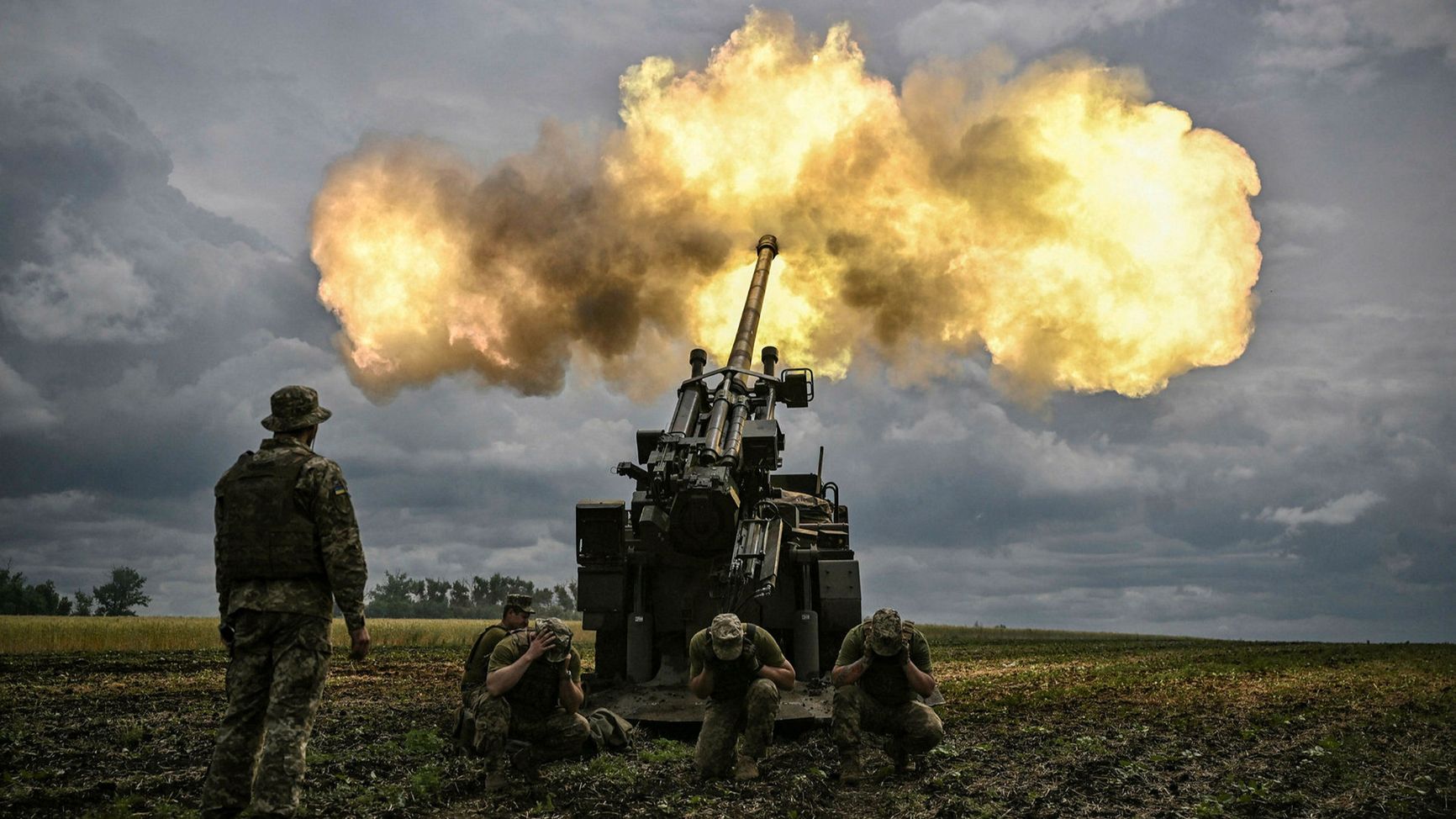
The Russians used “super-concentrated artillery” or “barrage,” which destroyed enemy defenses (and often cities they freed) but needed huge amounts of ammo up to 60,000 rounds per day at most. The Ukrainians, after getting high-precision artillery systems like American HIMARS and French CAESARs from Western allies, focused on hitting warehouses, bases and command centers far behind enemy lines.
By using artillery barrage, the Russian army has recently gained ground in Donbass. However, this also caused them to run low on shells that hinder their ability to launch more attacks. This problem triggered a fierce argument between Yevgeni Prigozhin, the founder of Wagner PMC, a Russian private military contractor, and the defense ministry leaders.
In turn, the Ukrainian army used long-range and high-precision artillery systems to push back the Russian army in the Kharkov region and make them retreat from the west bank of the Dnieper River in the Kherson region, leaving Kherson behind. However, HIMARS and CAESARs cannot provide enough fire support on the front line.
David Gendelman, independent military expert (Israel):
Artillery plays a crucial role in this war for both Russia and Ukraine, who follow the Soviet principle that “Artillery is the god of war.” However, they do not have the same capabilities and stocks as the Soviet Union did, so they are facing a challenge of running out of shells and having their barrels wear out. Ukraine is asking for more artillery and ammunition from its allies and has recently launched its own shell production, while Russia is boosting its production capacity.
The common contrast between quantity and quality approaches, such as “firepower or high accuracy”, is not quite correct. All modern armies are increasing the use of high-precision barrel and rocket artillery rounds (Excalibur, Krasnopol, 9M544, GMLRS, etc.), and this trend will persist. But this does not replace the need for mass volleys, for different fire tasks need different means, so besides quality, quantity is also needed. And in general, for artillery, the new U.S. Army Field Manual FM 3-0 from October 2022 replaced “fire” with “firepower” and moved it from sixth to second in the combat power components list compared to the 2017 edition. This is one of the lessons of the Russian-Ukrainian war.
Drones trump jets
Observers are surprised by the minor role of aviation in the Ukrainian military campaign. Unmanned systems handle almost all airborne tasks that combat aircraft used to do. The Russian Air Force, despite its huge quantitative edge, rarely flies behind the front lines, scared of the Ukrainian air defense system. Ukraine also chooses not to endanger its few aircraft in service.
Russian military experts admit with some surprise: “We learned that strike aviation can’t do its tasks well on the front line or deeper into enemy territory, even when we have air superiority, as long as the enemy can still use some air defense facilities, getting full-scale intelligence and targeting from radar and surveillance systems, and air and space reconnaissance facilities of NATO countries.”
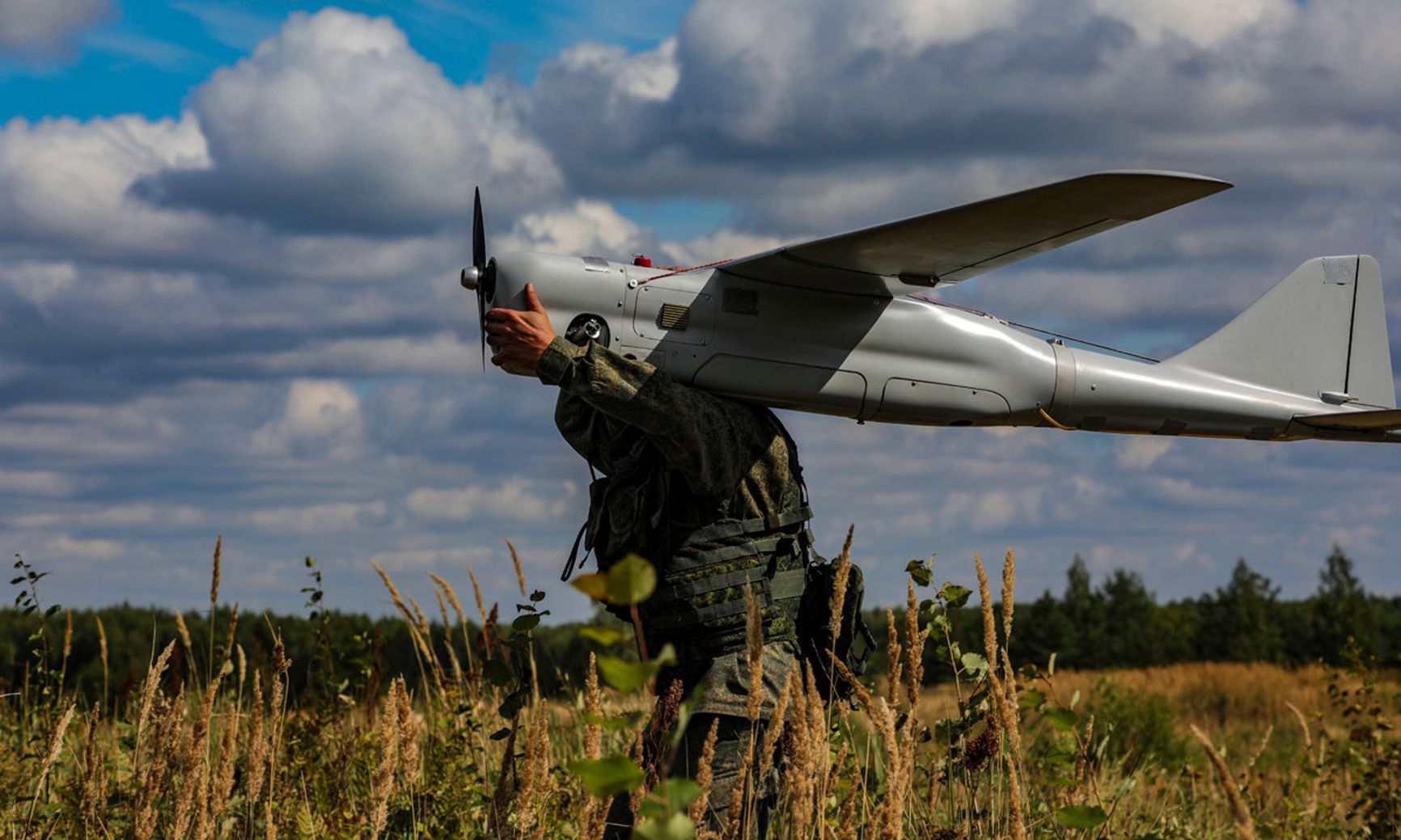
Western analysts think that the very concept of air power might be changing in front of our eyes. Drones that are cheap and relatively easy to use are taking the place of manned vehicles that are extremely costly and hard to operate. And munitions and aircraft that can hover and fire like the Iranian Shahed and even the upgraded Soviet Tu-141 Strizh are partly replacing the strike capability of fighter and bomber aircraft.
Even the simplest commercial quadcopters give an edge at the tactical level, because they can reveal enemy positions, monitor objectives, and adjust fire. A unit on the front lines is “blind” without drones. Quadcopters with a drop device and attached grenades or grenade launcher rounds regularly “terrorize” the enemy - and from both sides.
Drone War One
The Russian-Ukrainian war starts a technical revolution in military affairs that affects not only unmanned aerial systems, but also autonomous or remotely piloted vehicles in general. Journalists exaggerate a bit when they call the events in Ukraine “the first drone war”, meaning that autonomous vehicles are used for the first time in a large-scale conflict in the air, on land and at sea in all stages of combat.
Ukraine launched unprecedented drone boat assault on Russian naval base. Unmanned vessels carrying explosives struck the Black Sea Fleet’s ships and port infrastructure in Novorossiysk in a daring raid that experts say could transform naval warfare. Experts likened the attack to the historic British air raid on Taranto in 1940 that ushered in a new era of aircraft carrier strategy.
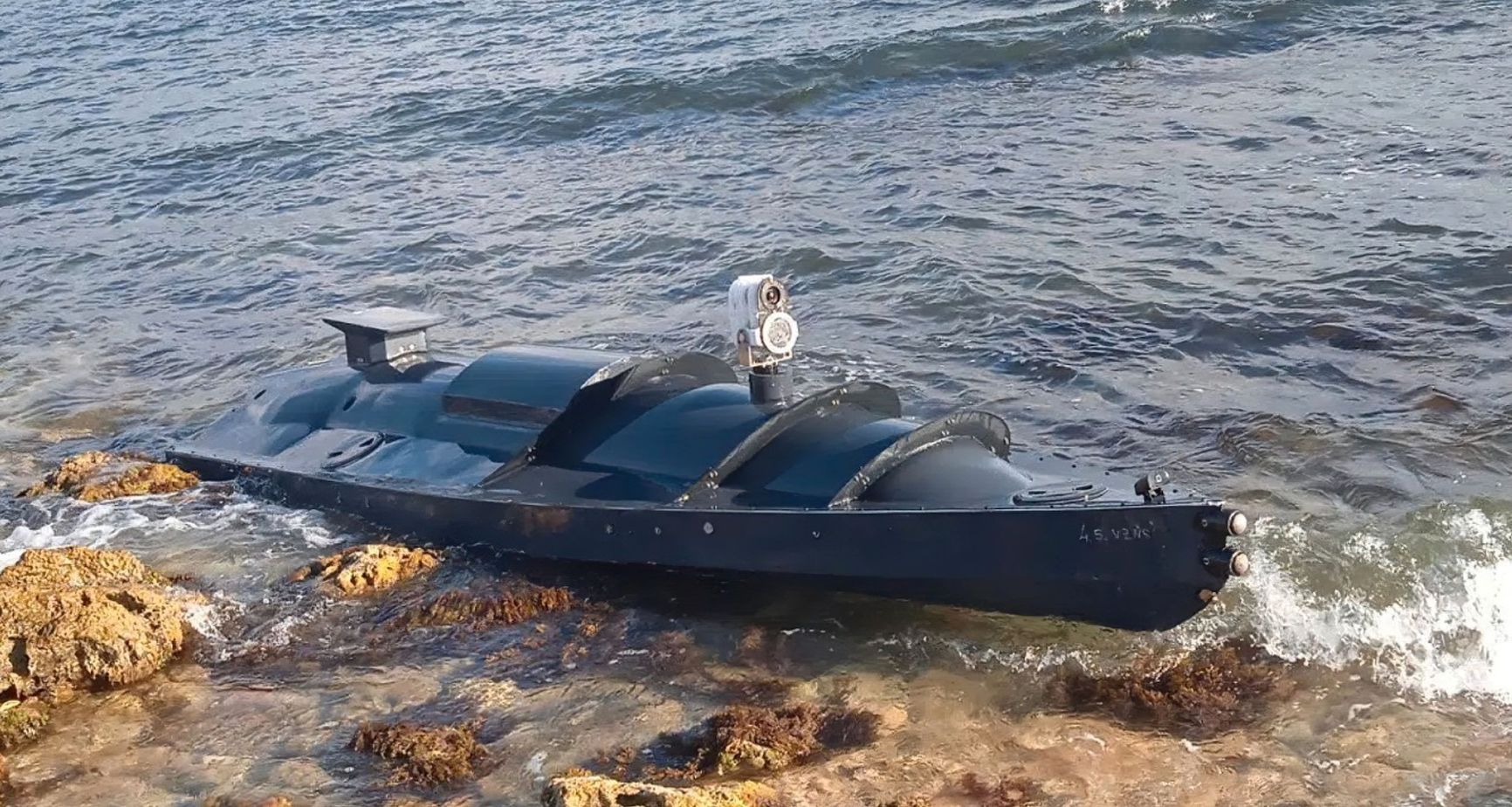
On land, things are less advanced so far. The Ukrainian Armed Forces receive tracked unmanned THeMIS robotic systems from the Estonian company Milrem Robotics for evacuation and logistics tasks. And former Roscosmos head Dmitry Rogozin delivered some prototypes of the wheeled autonomous robot Marker, called the “Leopard killer,” to the combat zone.
Hierarchy works poorly
The classic military thinker Carl von Clausewitz taught that success in war depends on the ability to adjust and use the conditions of space, time, and relations created by the combat situation to one’s advantage. The war between Russia and Ukraine showed clearly how different the process of adjustment and training can be and how it relates to the structure of the military force and probably the state itself.
According to estimates, the Ukrainian army has adapted better due to higher training standards and more flexibility on the battlefield. Even though the Russian Armed Forces General Staff has changed both the tactics and strategy of the Ukrainian campaign several times, tight centralization, strict hierarchy in decision-making, as well as lack of accountability to society, a culture of arrogance and “eyewashing” cancel out any edge in equipment and firepower.

The differences between the Russian and Ukrainian Armed Forces may stem from the differences in their socio-political structures. Under an authoritarian regime based on corruption, nepotism and extreme inequality, the army can hardly be expected to be an institution based on different principles. At the same time, the network structures and horizontal interactions that permeate society set a completely different framework for the military machine as well.
Pavel Luzin, Russian foreign and defense policy expert, political scientist, visiting scholar at the Fletcher School, Tufts University (USA):
The war revealed that a system that is authoritarian and non-market, and that serves the interests of a few powerful individuals who want to keep their power and wealth, will always act aggressively. But such a system, being more wicked, will always be organizationally weaker than a system that is based on self-organization and feedback, and therefore freedom. This was already clear before and confirmed again by practice: being able to act on initiative, think flexibly and make decisions based on up-to-date information (communication systems, intelligence, etc.) works better than a rigid and layered hierarchy.
Logistics and supply chains top the list
NATO Secretary General Jens Stoltenberg has been saying repeatedly in the last weeks: The war in Ukraine is more and more about a competition of logistical systems. In simple terms, this means how well Ukraine’s NATO allies and Russia make and store military equipment, ammunition, gear, repair and maintain them, and deliver food and fuel to the front lines on time. Army logistics and supply involve industrial, transportation, storage capacities, as well as accounting, control, distribution, etc.

As a report by the American Modern War Institute (MWI) stated clearly, “logistics shapes your destiny.” Especially in the type of war of attrition that goes on in Ukraine. In fact, the chances for any offensive operations depend on the ability of logistics systems. For this reason, for example, Russian troops simply cannot sustain combat operations at a distance of 160 km from the railroad supply lines due to a lack of trucks.
Quantity is no longer quality
Before Russia invaded Western experts and military forces thought that Ukraine’s government would collapse in a few days. This was a reasonable pessimistic forecast. Russia had invested a lot in modernizing its weapons, its army had done well in small-scale operations in Crimea, eastern Ukraine, and Syria, and it had more equipment and troops than Ukraine in every category.
AS it turned out, the numbers and equipment did not matter when the planning and leadership were poor. The so-called SMO had no leader for a long time, and officers could not tell soldiers why they were invading. Ukraine mobilized more troops as Russia lost many soldiers, but the Russians still sent light infantry to attack strong enemy positions with little or no artillery help. These were called “meat assaults.”
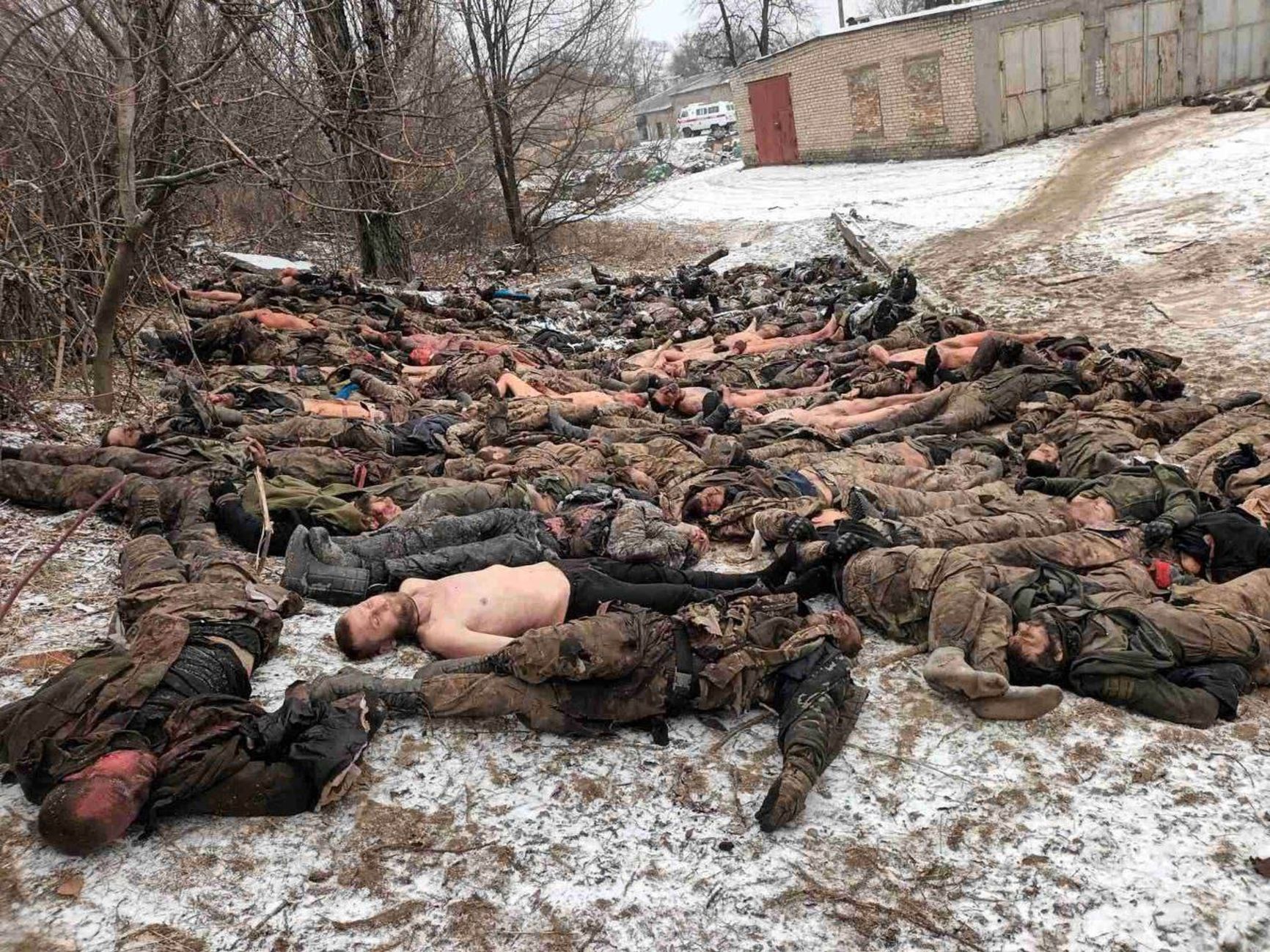
The tactic of “bombarding the enemy with corpses” has been especially “effective” in some parts of the front, where the Wagner PMCs’ hired mercenaries operate. The tactic does work, but only when the soldiers are forced to move forward by people with sledgehammers behind them. And the results are modest anyway: Western estimates say that the Russian troops lose up to two thousand people to advance by 90 meters.
Attacking strong enemy positions without checking them and using artillery first, and only using manpower, is like going back to World War I, not World War II. When the personnel are treated like this, and there is no investment in human capital (education, training, and equipment), it does not make sense to invest in equipment and weapon systems either.
Frank Ledwidge, a former British military intelligence officer and senior lecturer at the University of Portsmouth:
I think the principles of how to organize and manage warfare have not changed; they have become stronger. NATO and the West have been busy with useless wars and movements for twenty years and have forgotten that war against an equal enemy will need mass action. You can't win by using information operations, hybrid warfare (a very silly idea), or other strange methods. The last year has shown how important the three parts of fighting power are: the material–the number, quality, and training; the conceptual–good doctrine used by good leadership; and the moral part, which is the military advantage from having and keeping the will to fight.
Battlefield entrepreneurs
Observers note that the war in Ukraine looks like wars in the Middle Ages and early modern times, when regular armies, volunteer militias, various mercenaries, and something like private security companies fought together. This kind of variety is on both sides of the front, but nonstate actors have more roles than this. Private individuals and business representatives are definitely more important than the fighters of the Wagner PMCs.
For instance, the OSINT industry, which consists of NGOs, commercial companies and individual enthusiasts who are interested in open data analysis, scrutinizes enormous amounts of open data and influences how war is perceived by the public opinion and by the decision makers. Furthermore, according to some estimates that have been made, today we can say that a significant part of the Ukrainian killing chain (the process of identifying targets and destroying them on the battlefield) is outsourced to the OSINT community.

The war might have been very different without the commercial providers of high-resolution satellite imagery (Maxar, Planet Labs), the IT industry giants that have given Kyiv their cybersecurity and data storage resources (Amazon, Microsoft) or software products and solutions (Google, Palantir), and, of course, Elon Musk, who supplied Ukraine with satellite Internet through Starlink terminals.
George Derluguian, historical macrosociologist and professor at New York University, Abu Dhabi, UAE:
The privilege of having a lawful monopoly on violence now belongs to richer countries. You can see the contrast if you visit places like Nigeria or Mozambique, Syria or Iraq, or the crime-ridden slums of Brazil or El Salvador. Ukraine is experiencing the opposite process. Volunteer battalions have earned combat fame and experience at a high cost, and now they are essentially the guard units of the AFU. The leaders of the Donbass rebel groups have mostly failed to maintain their brief moments of charismatic glory. Their groups are formally being integrated into the Russian army.
Feudalism is when local kings and bishops, without Roman legions to protect them, try to hire (and fire) local lords and pirates, tribal chiefs, Vikings or steppe warriors with money or land promises, and then fight with whoever they can assemble with whatever weapons they have. It took the Hundred Years’ War for the most skilled soldiers to start selling their services as mercenaries with some professional ethics. That’s why there are so many statues of condottieri (literally contractors) on horseback in the Italian Renaissance. We haven’t seen anything like that yet. The current war is more traditional than what futurists expected.
Monitors instead of assault rifles
Many Ukrainians wish they had kept their nuclear weapons instead of giving them up, as they are now at war with a nuclear power. But if Alex Karp, the head of Palantir, is to be believed, the Ukrainian military has something as powerful as tactical nuclear weapons - an algorithmic system that collects information and manages battles. With Palantir solutions (such as MetaConstellation, which analyzes satellite data), the Ukrainian Armed Forces have reportedly been able to clear the “fog of war” and launch a successful counterattack at Kharkov and push back the Russian troops from Kherson.

The invasion of Ukraine in the past year has shown that “monitors” are no less or even more significant for the military than “assault rifles”. The AFU appears to be developing a unified information space on the battlefield that enables them to collect, process and distribute operational data and act upon it. This C4ISR (Command, Control, Communications, Computers, Intelligence, Surveillance and Reconnaissance) space consists of various elements - from cell phone applications to the Arta geo-information system for artillery or the Delta system for general operation forces.
The Ukrainian experience indicates that space reconnaissance, electronic reconnaissance, unmanned aerial vehicles and software tools for artificial intelligence, big data analysis and machine learning establish new standards for managing combat operations in terms of finding the optimal ways to use their forces and means and destroy those of the enemy.
Frank Ledwidge, a former British military intelligence officer and senior lecturer at the University of Portsmouth:
C4 - Command, Control, Communications and Computers - are the technical parts of communication and control in NATO military terms. In modern terms, this means that if an enemy can stop the flow of ones and zeros, there is a big problem. This idea is not new – last century also had decoders or electronic jammers that were important. I think Starlink was essential for the Ukrainian C4, affording secure and reliable communications and making other new and very effective technologies possible at the tactical level.
But let’s look at the bigger picture. Ukraine has made two points with all these innovations, appurtenances, and opportunities. First, the benefits of a nation at war. To be fair, the regular armed forces are not known for being smart, creative, open or original anywhere. They are not always made of the best and brightest, no matter what propaganda says. When a whole nation, with all its talents, joins a military effort and their potential is freed, supported by strong will, we see results like this. That’s why Ukraine is winning. Second, they have the free world on their side with its strong superiority in technology and money.
Nukes are not an advantage
Vladimir Putin said at the start of the invasion that nuclear weapons were a protection against outside forces getting involved. It seemed that being a nuclear power was a strong argument for the invasion - after all, no one wants to deal with the enemy that can go up to the level of trading nuclear attacks. But the plan did not work out.
Also, having nuclear weapons has, in a way, become a problem. As Ukraine’s Western allies cross more and more “red lines” by giving new kinds of weapons, and as Russian forces take weeks to capture another town in Donbas, the propaganda environment has grown louder about the need to push the button for a decisive change in the war.

However, there are no reasonable scenarios for the use of nuclear weapons in the Ukrainian theater of military operations. Even if one considers tactical nukes in order to destroy strategically important bridges, transport hubs, airfields, or a demonstrative strike on deserted terrain to demoralize the enemy. Apparently, Putin himself understands this.
Pavel Podvig, nuclear security expert at the United Nations Institute for Disarmament Research (Switzerland):
In my view, the war in Ukraine demonstrated that nuclear weapons have no military value. They lack appropriate targets when the enemy forces are spread out and concealed. They have the capacity to annihilate a large number of people in a single moment - possibly tens or hundreds of thousands - but they have low effectiveness against hardened facilities and military equipment. This is their only role.
The idea of using nuclear weapons for strategic goals, to end a war by destroying the enemy’s morale, is only theoretical. This is how some people see the attacks on Japanese cities in 1945. But for that to work, the damage must be very huge. It is obvious that such a decision would be extremely hard to make. In the past year of war, almost every country has clearly said that they will not accept any nuclear threats or attacks. This makes us think that Russia will not use nuclear weapons against Ukraine in any case.
We can see this from how the Russian leaders only talked about nuclear weapons as a possible answer to Western countries getting involved in the war. They hoped that this would make Ukraine’s allies back off. This worked a little bit, but they also found out that they could not stop other kinds of help for Ukraine with nuclear threats. Sure, this help could have come sooner and be bigger, but it is there, and it keeps growing.
No cyber attacks
A puzzling aspect of the Russia-Ukraine conflict is the lack of significant cyber attacks by Russian hackers on Ukraine, despite their widespread presence. While they were able to carry out a handful of successful but constrained operations in the initial days of the invasion, their overall accomplishments have been unimpressive compared to their prewar performance.
A potential explanation could be attributed to the assistance received by Kyiv from Amazon Web Services, which facilitated the swift migration of over 10 petabytes of crucial data to the cloud for more than 30 government entities, and Microsoft, which granted priority access to its cybersecurity solutions.

An additional plausible justification could be that the Kremlin has not strategized for a significant cyber offensive, relying instead on the swiftness of a “special military operation,” or lacks the essential technical capabilities and expertise to counter Ukraine's sophisticated digital infrastructure supported by Western partners.
War machine powered by microchips
In August 2022, the Royal United Service Institute for Defense and Security Studies (RUSI) published a report titled “Western Electronics at the Heart of Russia's War Machine,” which is not an exaggeration but a factual representation. The report's authors, including experts from Conflict Armament Research (CAR), a British nonprofit organization, and various other entities, have discovered that the latest Russian weaponry, military equipment, and missiles are rife with microchips from American and European manufacturers.

Additionally, researchers have found Western chips in the Shahed Iranian kamikaze drones, which have fallen into their hands. Although Russian and Iranian manufacturers have succeeded in circumventing export restrictions to acquire the necessary cutting-edge technologies by any means necessary, the lack of a well-established radio-electronic industry places the Russian military-industrial complex, and any others, in a precarious position over the long haul.
Fighting everywhere
The conflict between Russia and Ukraine transcends the common portrayal as “a highly dynamic clash across multiple domains (water, land, air, space, and cyberspace), with each faction striving to surpass the other in combat capability, flexibility, and resilience.” In addition to this, there are several other battles underway, such as energy, trade, sanctions, a narrative war in the media, and a war for lobbying influence (commonly referred to as weaponized corruption in the West).
One of the most notable examples of the conflict's “hybrid” nature is the remarkable success of Ukrainian President Volodymyr Zelensky in leveraging media, social networks, and video-conferencing speeches at public gatherings (including the Grammy Awards ceremony and pre-game warm-up for the Super Bowl) to address foreign policy challenges by influencing both public opinion and elites.
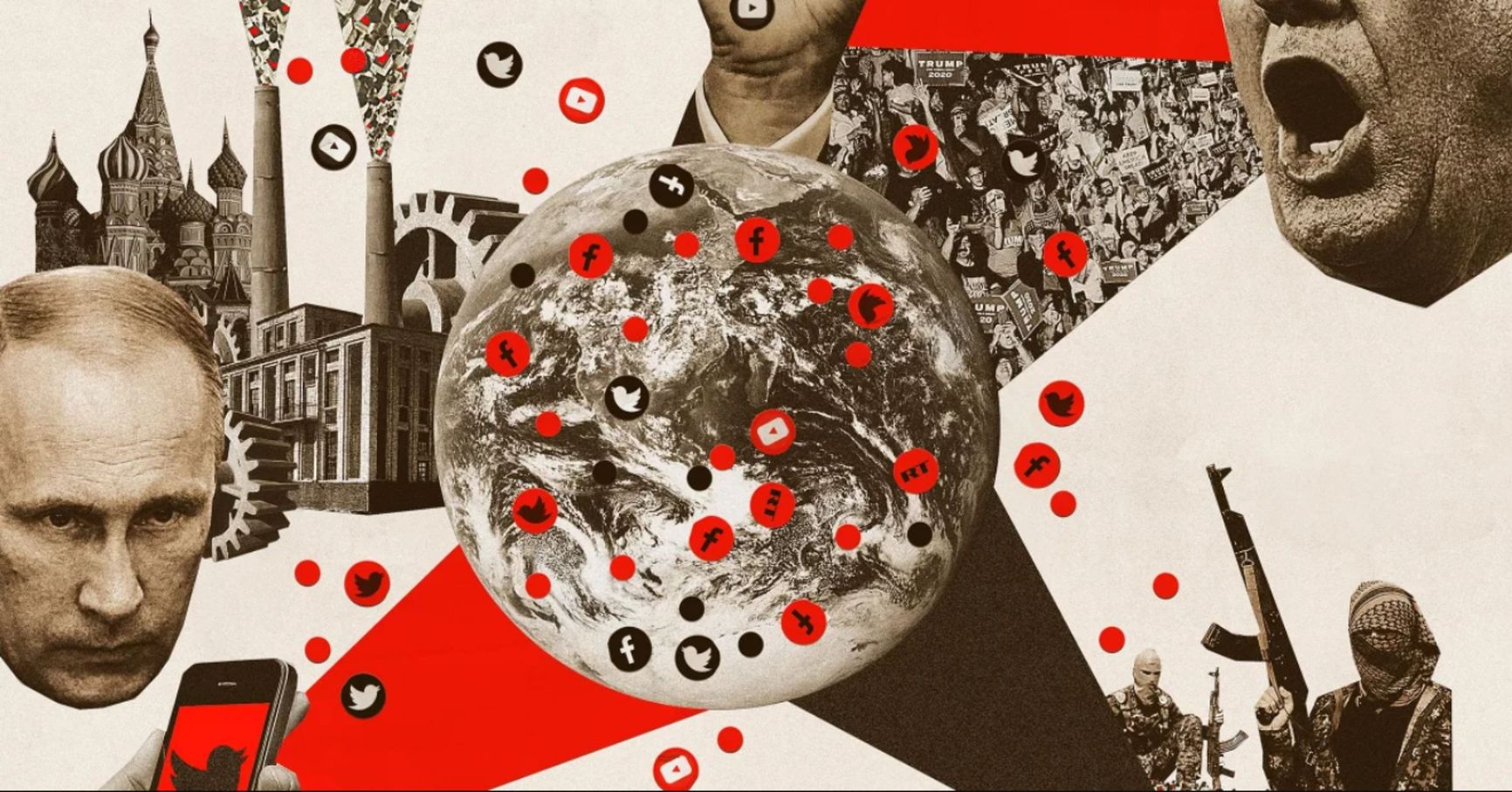
Both Ukraine and Russia are engaged in a media war, flooding the space with visual and audio content that discredits the adversary. Notably, the conflict in Ukraine represents the first instance of a military confrontation where deepfake videos are routinely created for military ends (as part of psychological operations and disinformation campaigns).
Defense before attack
The Ukrainian conflict clearly demonstrates the progress that defensive weapons have made in recent decades:
- antitank weapons limited the use of tanks, primarily in urban environments;
- anti-aircraft systems prevented the air force from gaining air supremacy;
- missile defenses have significantly reduced the effectiveness of Russia's strategy of high-precision missile strikes on Ukrainian territory;
- anti-ship weapons forced the Black Sea Fleet to stay away from Ukrainian shores;
- counter-drones not only neutralize, but also literally “steal” enemy drones.

In short, the development of “anti-offensive” systems has undoubtedly contributed to the “positional stalemate” that has developed along most of the front lines. In the long term, this trend makes the sea and air domains in theaters of military operations essentially “no man's land,” thereby creating zones of “anti-access/area denial” (or A2/AD) strategy.
Warfare intensity controlled from outside
Ukraine's capacity to withstand Russian aggression, without detracting from the capabilities of the Armed Forces of Ukraine, hinges on foreign military assistance and not just that. From a strategic standpoint, the provision of Western weaponry enables Ukraine to shift from a defensive posture akin to the one adopted in the 1914-1918 era to a more agile and offensive strategy comparable to that of 1939-1945.
The specific equipment and ammunition provided to Ukraine, as well as the timing of deliveries, play a direct role in shaping the outcome of combat operations. This dynamic results in Kyiv's dependence on the political leadership of allied nations, who have the power to adjust the conflict's scale and intensity. Suffice it to say that negotiations regarding the supply of new long-range striking weapons often include clauses such as guarantees not to attack Russian territory that is internationally recognized.

Additionally, the HIMARS multiple-launch rocket systems supplied by the US to their Ukrainian allies were secretly altered to prevent the firing of long-range missiles and mitigate the chances of escalating tensions with Moscow. Similarly, SpaceX, owned by Elon Musk, limited the functionality of the Starlink satellite Internet system to govern drones for the same purpose.
Missiles are not enough for success
Over the last six months, Russia has been attempting to gain a definitive advantage in the ongoing conflict by executing extensive long-range attacks on Ukrainian infrastructure. The strategy was straightforward yet cruel: to disable the energy system during the frigid winter months, create a humanitarian crisis, and compel Ukrainian authorities to negotiate under the Kremlin's conditions.

During this time, the Russian Armed Forces fired over a thousand missiles and kamikaze drones at Ukraine in 14 waves of massive attacks and hit 112 critical infrastructure facilities. But they have failed to deprive Ukrainians of light and heat - energy facilities are being restored faster than missile strikes can destroy them.
You can't beat nature
Despite the advancements in military equipment and technology showcased in the Russian-Ukrainian conflict, the significant impact of natural and climatic factors on the course of hostilities cannot be overlooked. Similar to a century or even a millennium ago, factors such as weather, elevation differences, terrain features, soil types, and the placement of water bodies continue to play a pivotal role.
The unsuccessful attempt by Russia to seize Kyiv in February-March 2022 can be largely attributed to the prevalence of forested and swampy terrain in the surrounding areas of the Ukrainian capital. This same terrain also makes it unlikely for a new offensive to occur from Belarus towards Western Ukraine.

The front line's current configuration in the south is built around rivers and canals as natural defense barriers and their crossings. Crossing water obstacles remains one of the most challenging types of military operations in terms of strategy.
Urban warfare
In the past, battles were fought with enemies gathering in a field and marching towards each other. Eventually, earth ramparts, redoubts, and trenches appeared on the same field, but the essence of the battle remained the same - one mass of people against another in a relatively free space. However, the Ukrainian campaign is different as it mainly involves fighting in urban environments such as urban development areas, infrastructural and industrial facilities, rather than in fields.

The last six months of fighting in Donbas have mainly taken place in a massive agglomeration of residential buildings, roads, and industrial landscapes, including mines and waste heaps. While the phenomenon of urban warfare has been studied extensively, the events in Ukraine require a new perspective on Russian urban warfare tactics. As experts have noted, this is not a battle for cities, but rather a battle against them - an urbanicide. The typical outcome of “liberating” towns in Donbas is a heap of rubble and mass civilian casualties.